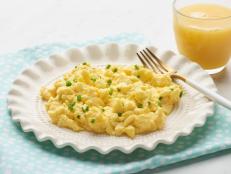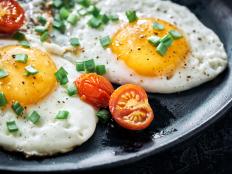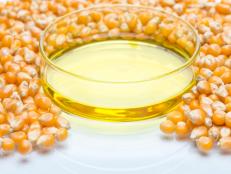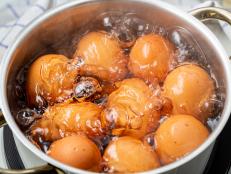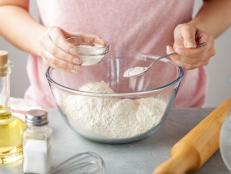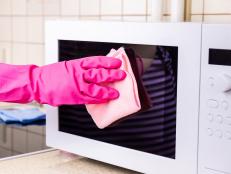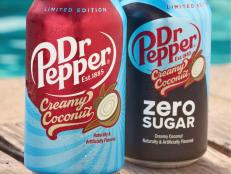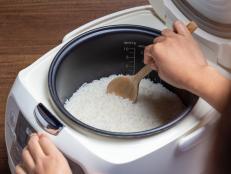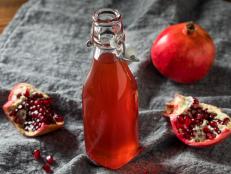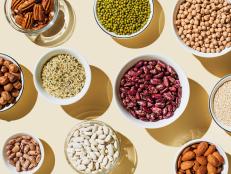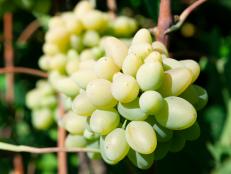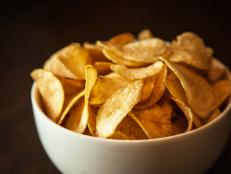How to Make Meringue: A Step-by-Step Guide
Follow these step-by-step tips to learn how to make two styles of meringue: French (as used on a pie) and Swiss (which is cooked and used, for example, in buttercream); then see more in a how-to video.
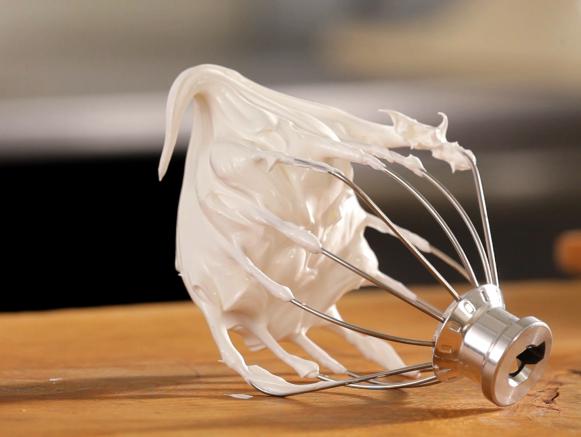
Learn how to make this elegant dessert from egg whites and sugar.
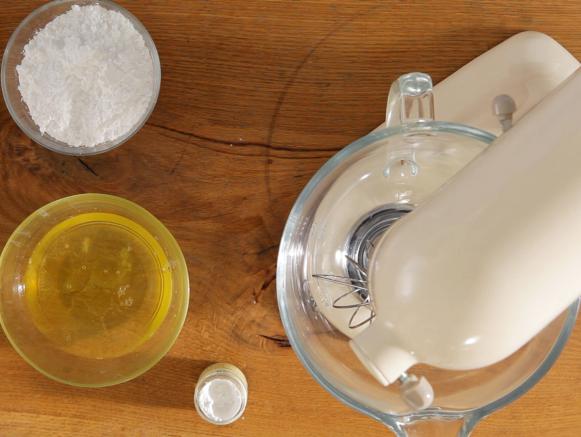
Step 1: Prep for French Meringue
French meringue is an unheated meringue that should be cooked on top of a pie, such as in Lemon Meringue, or as the base of meringue cookies and shells. Make sure your egg whites and equipment are clean. Even the smallest drop of yolk or oil will keep the eggs from reaching their full volume.

Step 2: Egg Whites Are Best at Room Temperature
Start with room-temperature egg whites — they whip higher.
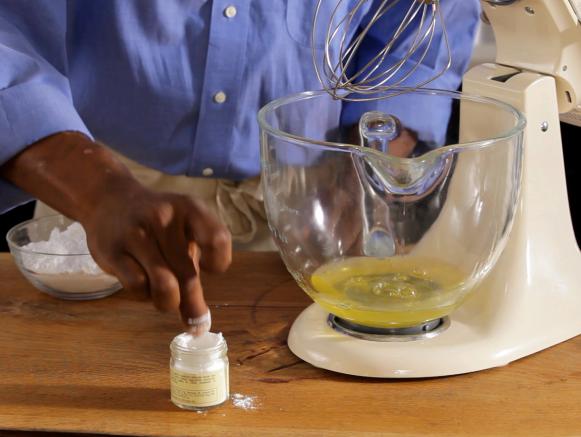
Step 3: Add Cream of Tartar
Add a pinch of cream of tartar — it's acidic and that adds stability and volume to the egg whites. Tip: If you don't have cream of tartar, use a little lemon juice.
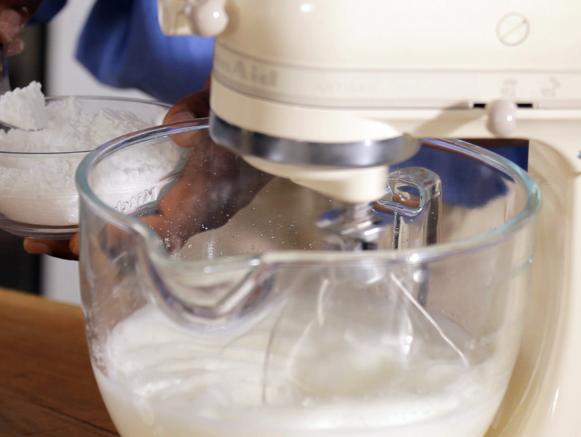
Step 4: Start to Whip the Eggs
Whip them until they're foamy and starting to get thicker. Then, slowly add confectioners' sugar — it melts easily and won't weigh down your meringue. Tip: If you don't have a stand mixer, you can still use a hand mixer.
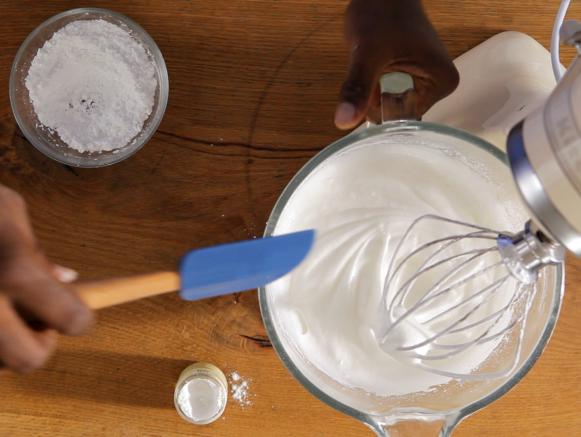
Step 5: Watch for Stiff Peaks
Continue whipping on high speed until it's thick and foamy, like shaving cream. Whip until stiff peaks form. If it's glossy and triple in volume, you did it. No need to take it further or the texture will change.
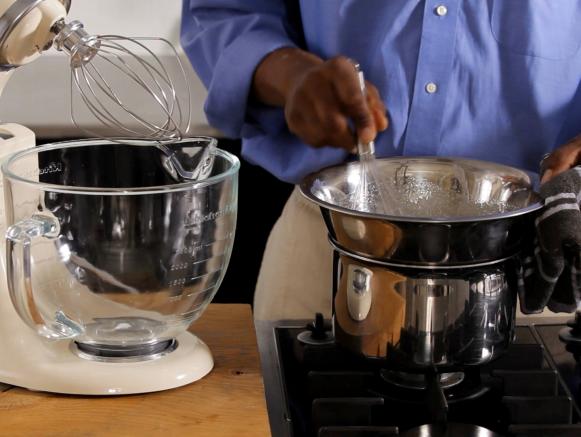
Step 6: Swiss Meringue
A Swiss meringue is a cooked meringue and it's also more stable, meaning it won't collapse. This meringue is used in buttercream or can also be poached for the classic French dessert Floating Island.
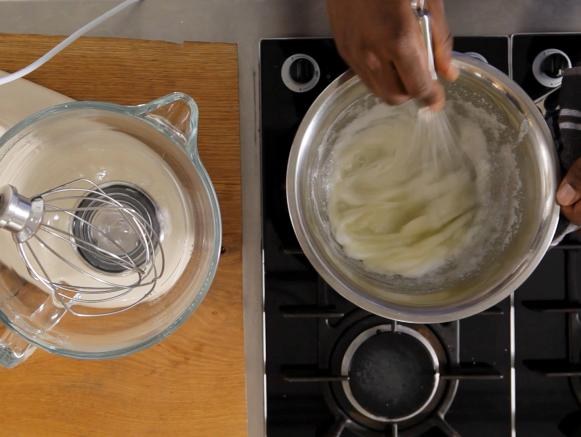
Step 7: Use a Double Boiler
Combine egg whites and granulated sugar over a double boiler. Tip: Older egg whites whip the highest. Keep whisking or you'll have scrambled eggs instead.
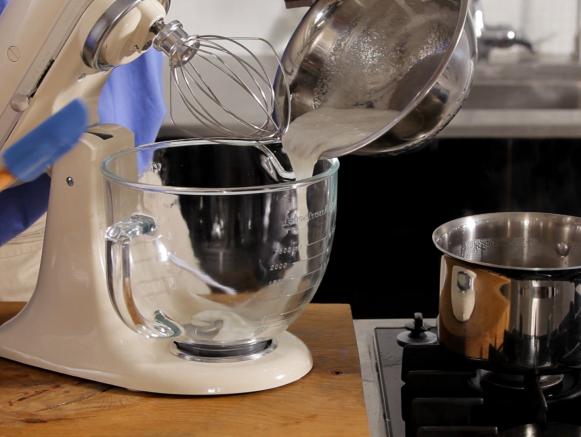
Step 8: Whisk the Sugar
Whisk until the sugar melts and you hit 130 degrees F on a thermometer. Once it's hot, it goes into the mixer. Tip: If the bowl is hot, use a potholder. You want it to be foamy and thick when you’re done mixing. You'll also notice that, as the mixture thickens, the bowl will get cooler.

Step 9: Whip the Mixture
Whip until you get stiff peaks that should stand up on the end of the whisk. Your desserts will receive a standing ovation. Watch our how-to video for more.
























